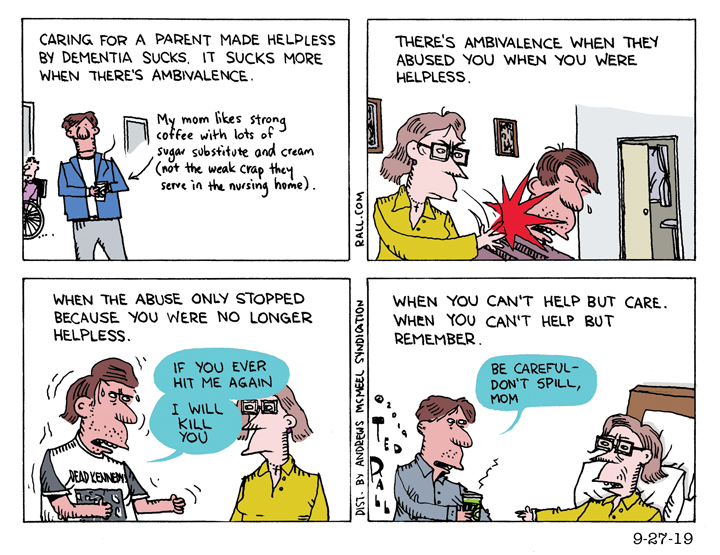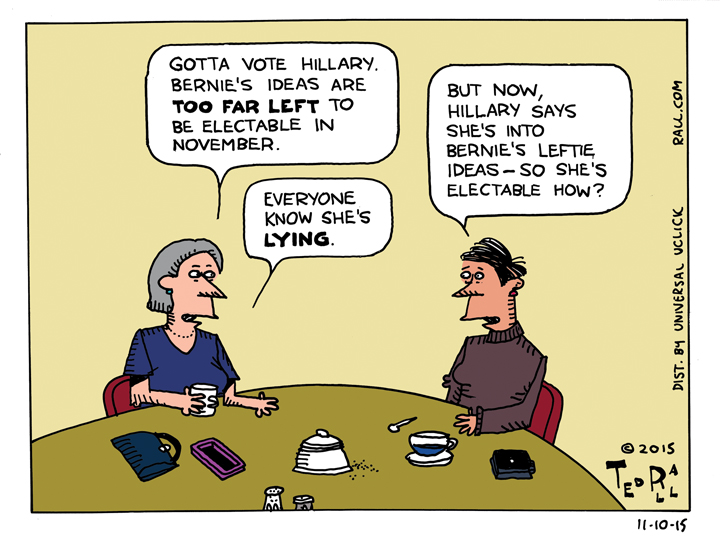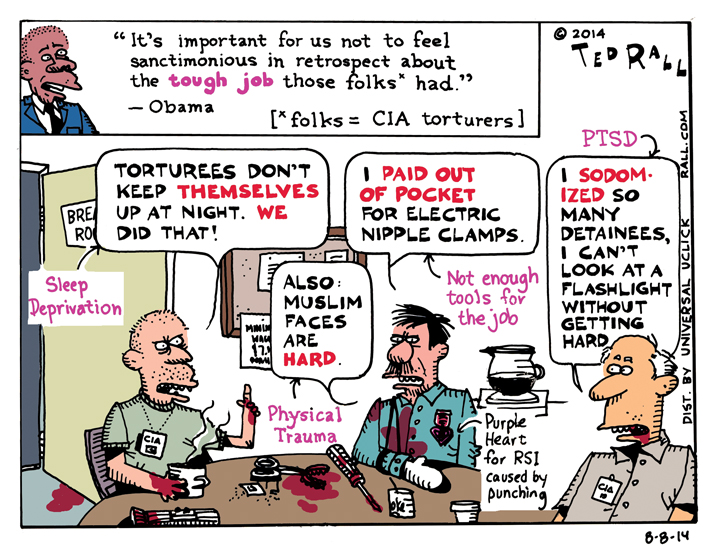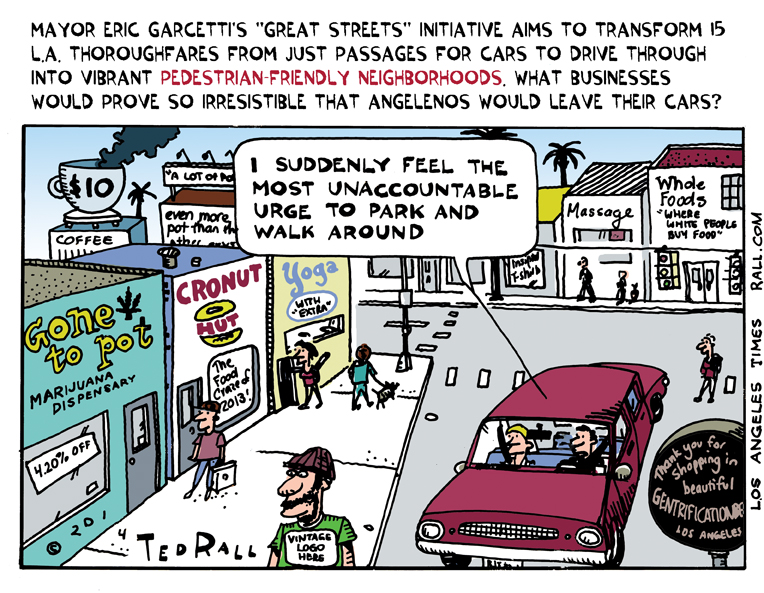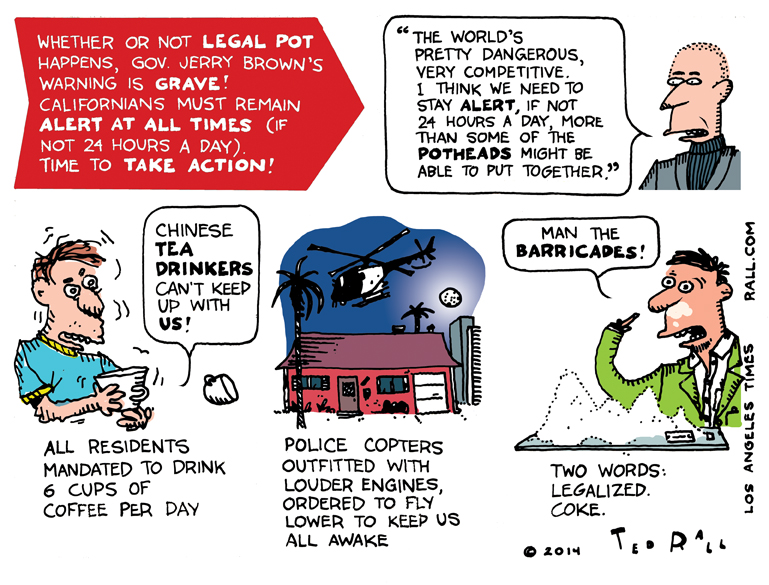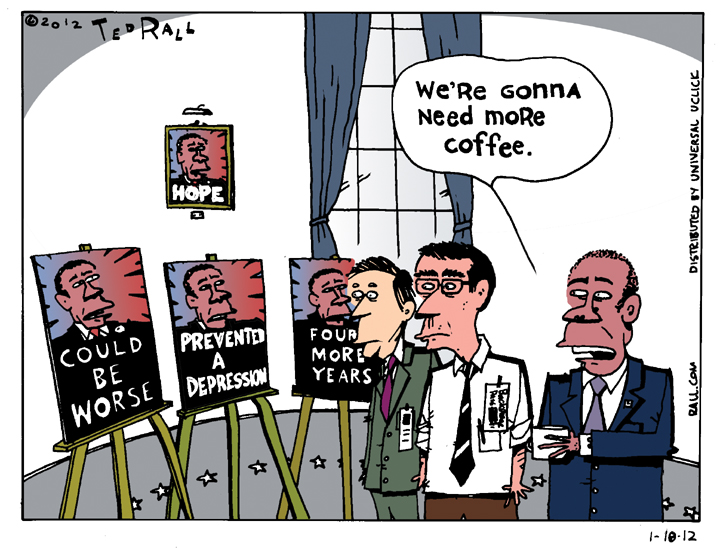Caring for a parent with dementia/Alzheimer’s is difficult. It’s even harder when there’s a family history that’s made fraught by abuse.
LOS ANGELES TIMES CARTOON: Great Streets? Or Just Gentrification?
One of the last books published by the modernist author Sherwood Anderson (now known for his revolutionary, transgressive short story collection “Winesburg, Ohio“) was “Home Town,” a WPA-funded 1940 examination in prose and photos of the waning small American town, with its inevitable strip of unpretentious diners, practical hardware stores and other staple businesses around which community life revolved. Even in the late 1930s, the rise of the automobile was expanding horizons, enabling sprawl and killing the intimacy of smaller communities that Anderson, like many Americans, found simultaneously comforting and stifling.
Decades of highway construction drove development away from urban centers all over the country and around the world, but nowhere has that phenomenon been more pronounced than Los Angeles, a city of more than 3.8 million people with such a remarkable absence of a clearly delineated central downtown — “Downtown” itself having become a ghost town at night and, for that matter, during many hours of the day — that it does not contain a highly symbolic target for post-9/11 terrorist attacks.
The Urban Dictionary calls L.A. “a massive tangle of highways and roads, also rumored to contain people and houses.”
For at least half a century, however, Americans have suffered a case of automotive and suburban remorse in the form of angst-ridden cris de coeur in the vein of Richard Yates’ “Revolutionary Road” (1961). A notable architectural reaction against sprawl was/is the New Urbanism movement that began in the 1980s, an attempt to recreate the small-town vibe documented by Anderson by increasing population density in new developments centered around pre-fab mini-downtown business districts that seek to be pedestrian-friendly.
Mayor Eric Garcetti’s “Great Streets” program follows this tradition, though at a scale whose ambitions are currently constrained by a lack of “the money and the space to add the types of transportation that would significantly reduce traffic congestion, such as widening streets or adding expensive mass transit,” write David Zahniser, Matt Stevens, and Laura J. Nelson in the Times.
“In a process the mayor describes as ‘urban acupuncture,’ the city plans to add bike racks, plazas, crosswalk upgrades and other amenities aimed at drawing in pedestrians and attracting new businesses” to 15 thoroughfares.
Some Angelenos are skeptical. Some worry Great Streets will fail, as have similar initiatives attempted by Garcetti’s predecessors. Others worry it will screw up traffic, a perennial problem in the city. Then there are those who worry it will work:
“In Highland Park, once sleepy York Boulevard has become a magnet for an array of middle- and upper-middle class needs: coffee, comic books, vegan ice cream, and $5 donuts. Abbot Kinney Boulevard in Venice, once favored mainly by locals, is now a regional tourist destination with prices to rival Rodeo Drive. Backers of the Great Streets program hope to achieve similar success.”
Overpriced coffee, pretentious deserts and overpriced pastries spell one thing: gentrification, the process of “improving” a neighborhood by driving up rents and expelling long-time residents, many of whom happen to be poor and/or have brown skin. (I’m OK with stores that sell comics, though.)
Aside from inconveniencing poor people and minorities with evictions and forcing them to commute from more distant suburbs to their jobs, gentrification makes neighborhoods strips ethnic flavor and makes them bland. Surely it should be possible to attract pedestrians to city streets minus gentrification — a mix of commercial rent control, curation of businesses and guarantees to long-term residents that they will be allowed to remain over the long run — but it hardly happens after the developers get involved. Given this history, it’s far more likely that Great Streets will become Great Streets for Upscale White People.
LOS ANGELES TIMES CARTOON: Why is Gov. Moonbeam so afraid of legalized marijuana?
Here is my cartoon this week for The Los Angeles Times:
The statewide legalization of marijuana in Colorado, for recreational as well as medicinal use, has prompted serious consideration of the drug’s health effects and socio-political ramifications. Well, that sure took awhile.
On the pro side, it’s been pretty much established that driving stoned isn’t nearly as dangerous as driving drunk. Since 7% of California motorists are cruising the state’s freeways with cannabis in their systems, that provides some comfort. (Sorry, no word on what percentage of the stoners are drunk as well.) Pot also has proven medical benefits; for example, parents of epileptic children are flocking to Colorado.
But the legalize hemp crowd’s timeless rant that pot is harmless is taking some hits.
A recent study claims to have documented the first two known cases of pot-related fatalities. Other studies find that beginning to smoke weed as a teenager — the most common age to start — can affect brain development, causing memory loss, permanently impaired judgment and even reduced IQ.
In musings that might surprise those who remember his “Moonbeam” period (but not those who have noticed there’s no squarer square than an old hippie), Gov. Jerry Brown took to Sunday morning TV to worry aloud that emulating Colorado could leave the state defenseless against (a) foreign business competition and (b) terrorism.
“How many people can get stoned and still have a great state or a great nation?” Brown mused. “The world’s pretty dangerous, very competitive. I think we need to stay alert, if not 24 hours a day, more than some of the potheads might be able to put together.”
The governor didn’t say whether his garbled grammar was attributable to pot or the shortcomings of his secondary education.
I’m always interested in policy appeals motivated by fear. Politicians have unleashed an awful lot of threats — a few real but mostly imagined — during the last decade and a half. And they haven’t exactly made us a better, stronger or more economically successful nation. Brown’s thoughts are nowhere close to the depraved paranoia of Dick Cheney; the idea that California will be morally and economically weakened, its security undermined, because a tiny minority of the state’s residents regularly indulge in the evil weed seems about as serious and substantial as a puff of smoke.
Stay alert? What’s going to happen if we don’t, governor? Are Chinese sweatshop workers going to take a fiscal victory dance on the bones of our stoner-sapped competitiveness? Will our collected stonedness open up the one big chance radical Islamists have been waiting for?
Californians won’t have the chance to vote for legalized pot until November 2016 — if they’re not too wasted to remember.

